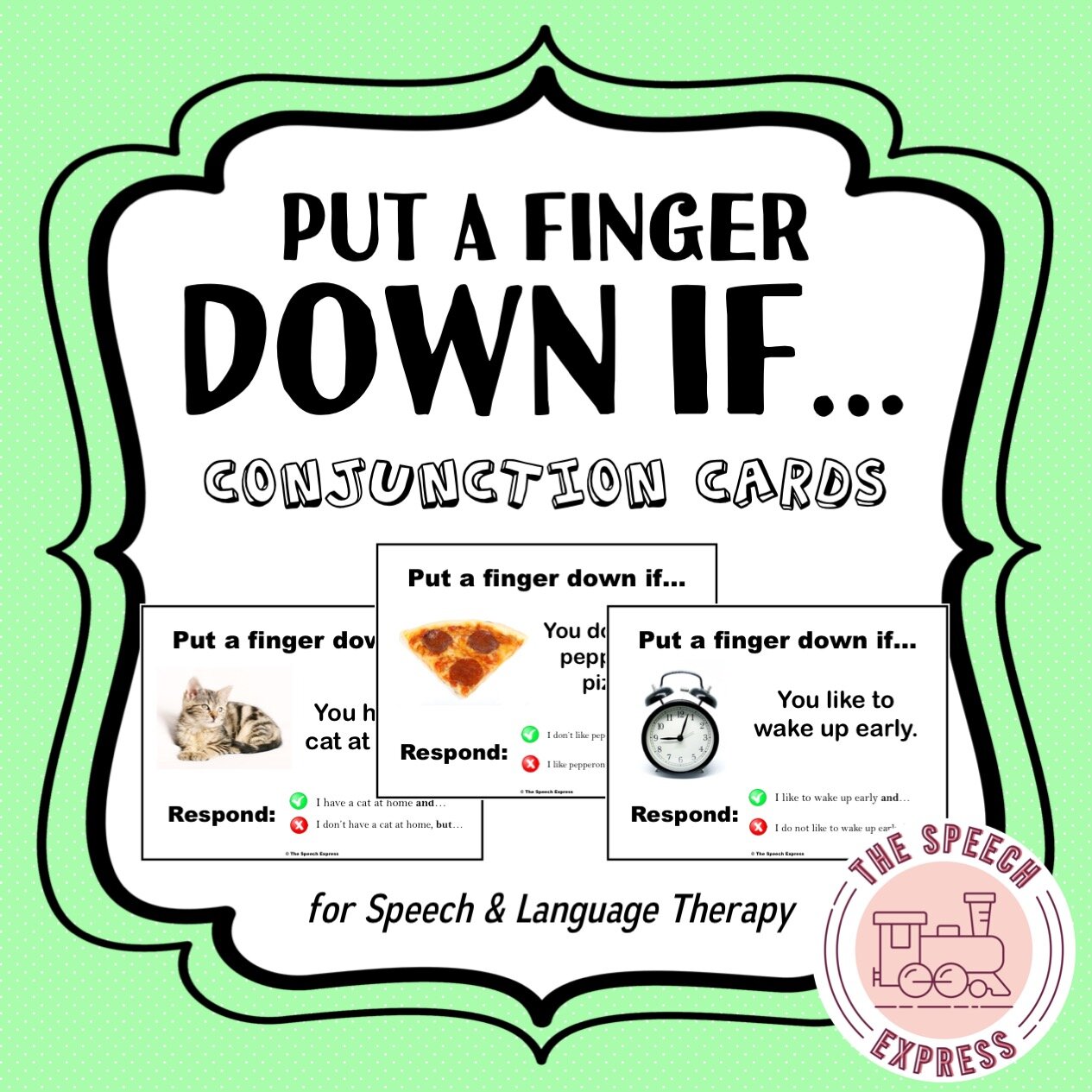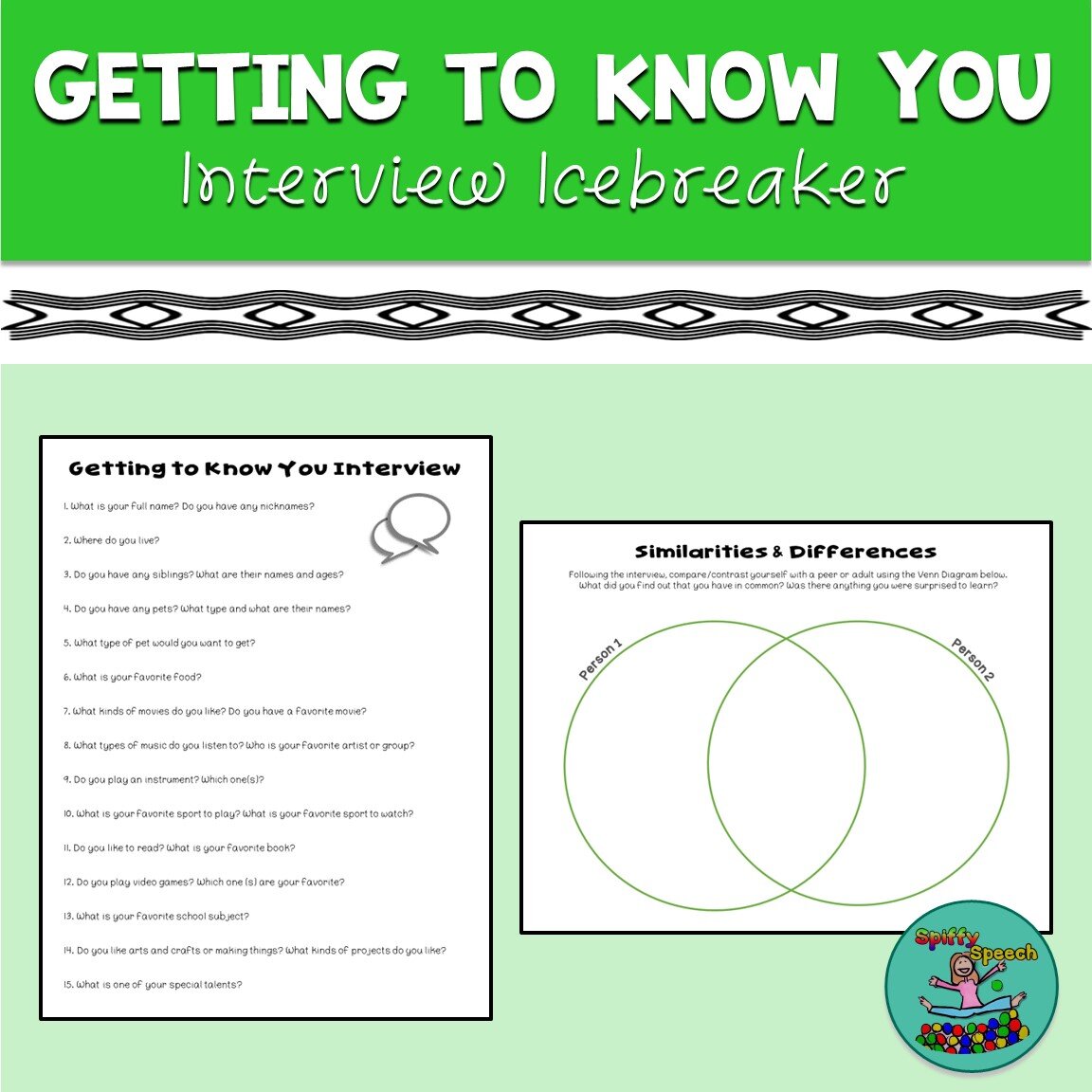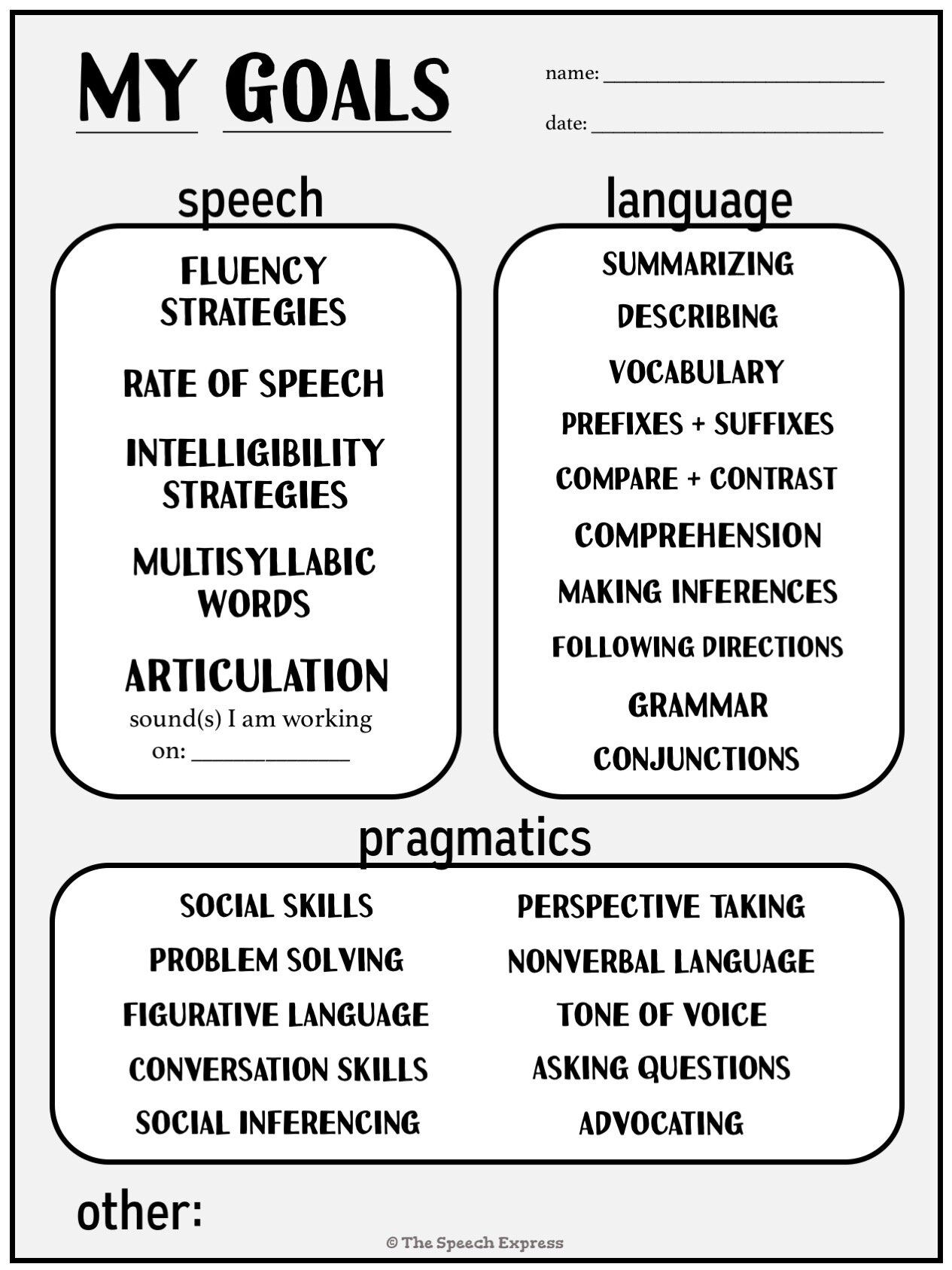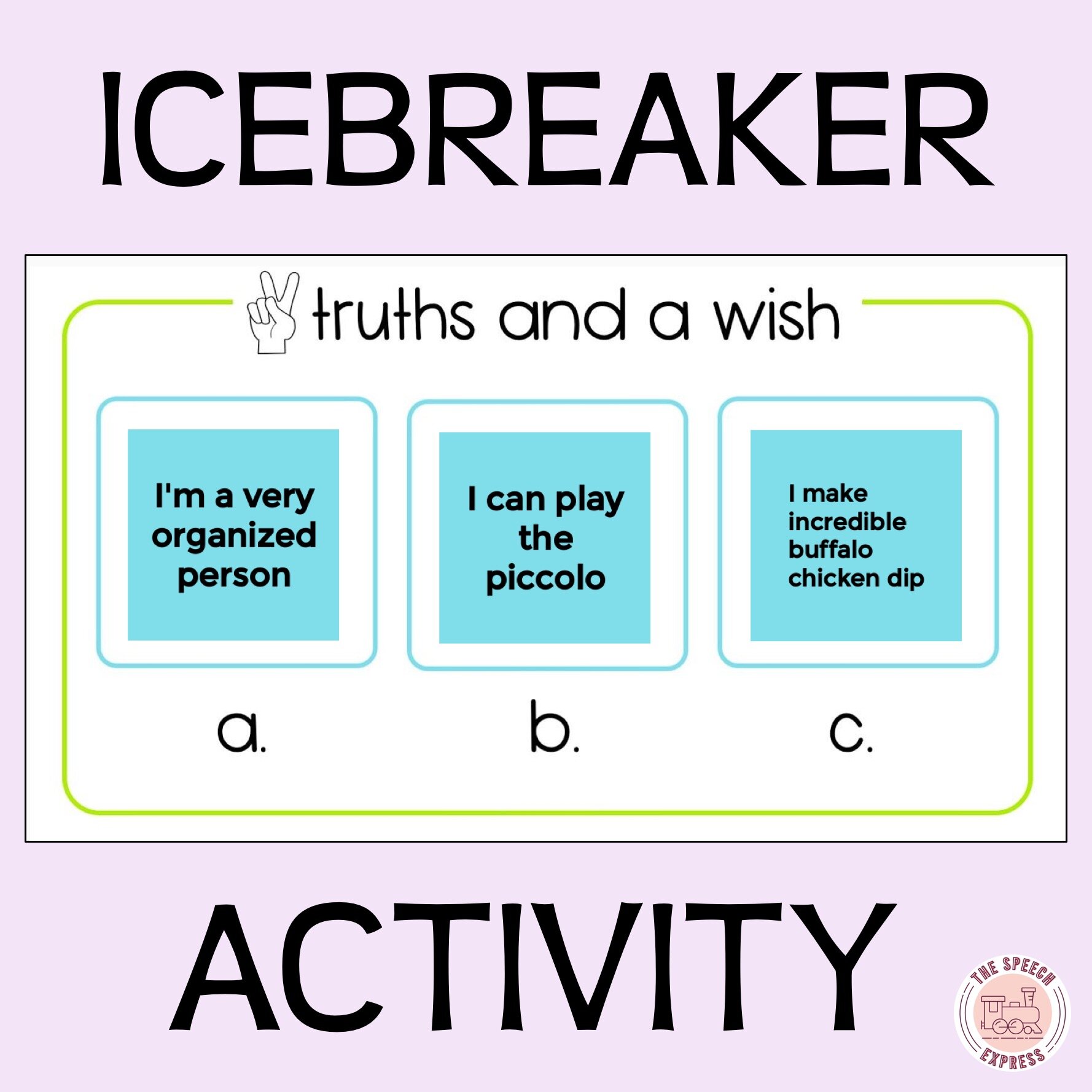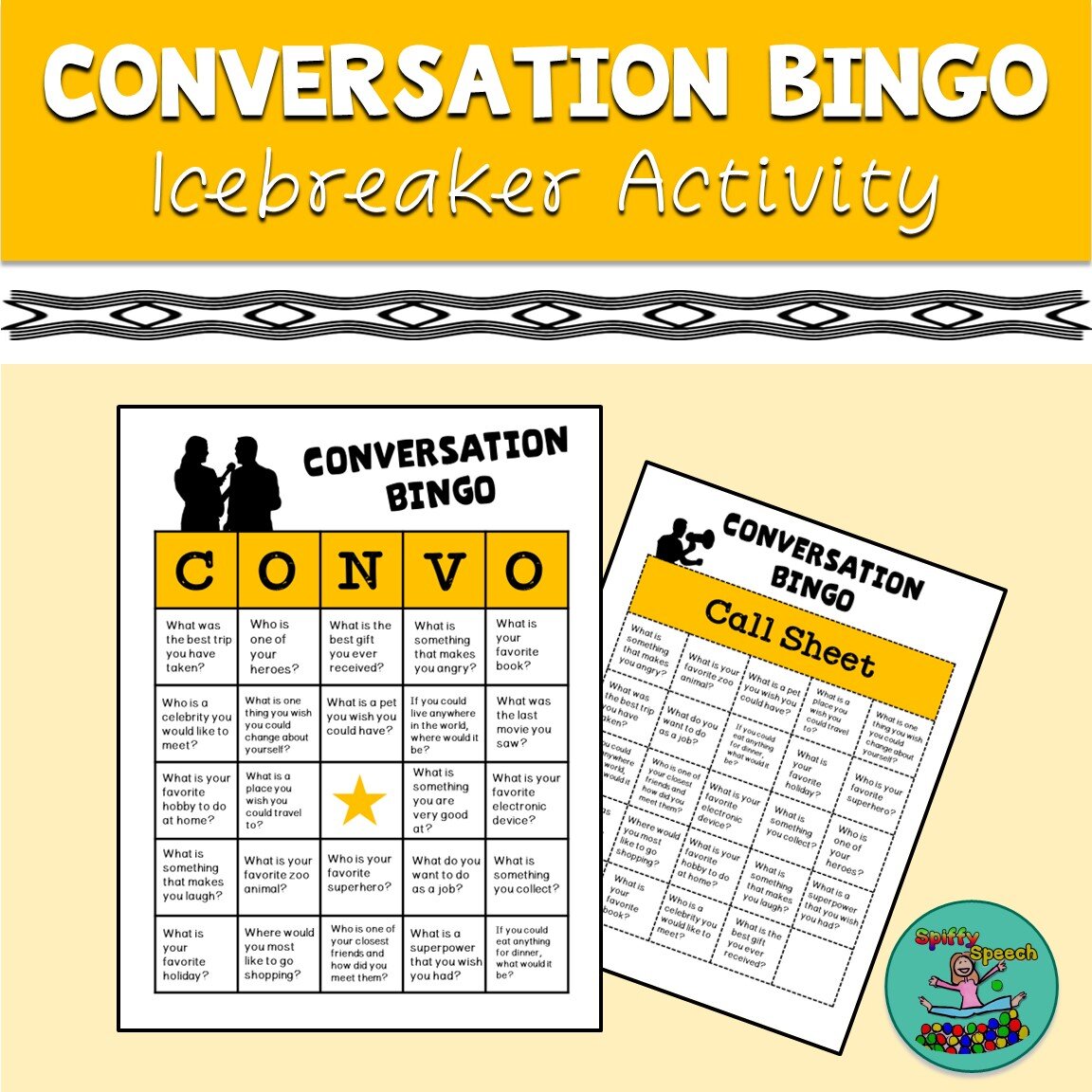The ULTIMATE List of Icebreakers for Speech + Language Therapy
Hi guys! Somehow it’s already September and the start of yet another school year. I hope you have managed to rest and regroup a bit this summer and that the transition back to work has gone as smoothly as possible.
I have once again teamed up with Holly Rosensweig of Spiffy Speech (@spiffyspeech), this time to bring you the ULTIMATE list of back-to-school themed ice breakers and activities!!! We know that this is still a stressful, challenging time for everyone, so we hope these resources (and freebies!!!) will make your therapy planning a little bit easier.
As always, if there is anything that belongs on this list that we may have forgotten to include, please let us know so we can add on! Comment below or feel free to message either of us on Instagram (@the_speech_express or @spiffyspeech) — we absolutely love hearing from you! Without further ado, here is our list of back to school icebreakers!
Draw a Pig Personality Test
This is a SUPER FUN first-week activity for older students and one that is sure to grab their attention! Students are given a piece of paper and a single direction - to draw a pig in 3 1/2 minutes. Once they have finished their drawing, everyone answers a list of questions about how their pig is drawn -based on its size, location on the page, ears, # of legs, etc. - and these characteristics will supposedly reveal certain personality traits about the artist.
FREE DOWNLOAD: Click here to download a freebie by The Speech Express!
Other personality tests that involve drawing: The House-Tree-Person Test, Tree Personality Test, Mountain Scene Personality Test
School Words: Describing & Naming Game
This resource by Spiffy Speech is played in the style of Taboo in that students describe words without saying any of the forbidden words (or any part of the target word). It can be used to target describing (within constraints) and naming words when described. This game is ideal for use with older elementary schoolers, middle schoolers, and high schoolers who are readers and who present with language formulation disfluencies and related word retrieval difficulty. It can be used to work on formulating sentences using age-appropriate grammar, higher-level vocabulary, and appropriate word choice. It can be used to practice “talking around” words that are difficult to retrieve, to practice synonyms/antonyms, and to explain word relationships. You can also modify this resource to be used with younger children by taking away the forbidden words. It can be paired with describing visuals such as EET.
Students also love playing this game with a buzzer! Download any free game buzzer on your phone/iPad and buzz kids (or have them buzz one another) whenever a forbidden word is spoken.
Put a Finger Down If…
The ‘Finger Down If’ challenge was inspired by a social media trend and is perfect for learning more about your students! To complete this activity, each student starts out by holding up all ten fingers. Choose 10 statements at random (i.e. I have a cat at home) and read them out loud – as you read each one, students should put a finger down if the statement applies to them. The person with the most fingers down after all 10 statements have been read is the winner.
You can create your own list of 10 statements OR you can check out this resource by The Speech Express, which includes 25 statement cards for the Finger Down activity. It is great for introductory sessions, sparking conversations, eliciting complex responses, and getting to know your students!
Using the cards included in the resource, students can further expand on answers AND practice conjunctions (i.e. and, but, because…) using sentence starters! For example…
“Put a finger down if you have a cat at home!”
Responses: I have a cat at home AND…[her name is Maui].
I do not have a cat at home, BUT… [I do have a golden retriever]
Getting To Know You Interview Icebreaker
Pairs of students (or a student paired with an educator) take turns asking one another questions to learn about each other! Students can jot down or audio record responses during the interviews if desired. Alternatively, to work on auditory recall/comprehension, they can be tasked with remembering one another’s responses. They can answer recall questions following the interviews (posed by the same peer educator) or can be required to relay the information they have learned to others. Following both interviews, each pair can use their answers to compare/contrast one another by completing the Venn Diagram provided, then discuss any similarities/differences they have discovered.
FREE DOWNLOAD: Click here to download a freebie by Spiffy Speech!
Letter to Your Future Self
What better first week activity than to write a letter to your future self? This activity offers up the opportunity to really get to know your students on a deeper level, and to begin to have some conversations about goals for the future. Plus - what better way to celebrate dismissal than to receive a letter from your past self (who had not yet mastered all of their speech goals)? In their letter, students can answer a variety of questions about their present interests, likes/dislikes, etc. and offer up advice to their future self.
FREE DOWNLOAD: Click here to download a freebie by The Speech Express!
Speech + Language Goal Review
Are you tired of students coming to speech without knowing why they’re there? These goal and strategy pages are perfect for guiding that discussion during initial sessions! They can be stored in students’ folders to review each time you meet, serving as a constant reminder of why they receive services and what exactly they’re working on! You can even share the criterion for each skill, and the difference between prompted and independent responses.
This resource includes two pages: one page for students to identify any goals they are working on in speech (pictured), and another for reviewing how the skills targeted apply to class and real life, and any strategies that can help.
FREE DOWNLOAD: Click here to download a freebie by The Speech Express!
2 Truths and a Lie
Students come up with three pieces of information about themselves - two things that are TRUE, and one thing that is a LIE. Students share their facts with the group, and the group gets to guess which one is the lie.
Variation - 2 Truths and a Wish
One of my favorite back to school activities is a variation of Two Truths and a Lie, but instead of telling a lie, students come up with a wish. Something that is not true...yet 🌟
This simple tweak to a well-known icebreaker provides SUCH a great opportunity to talk about goals and self determination. What can our students do to accomplish their wishes or dreams? How can they turn them into a reality? How can their communication goals support their dreams? And most importantly - how can we support our students?
Conversational Topic Bingo Games
Instead of calling out numbers, play a conversational topic bingo game that involves asking questions (or taking turns asking) questions! Students mark off the square after they have answered the question until someone has gotten five in a row.
FREE DOWNLOAD: Click here to download a freebie by Spiffy Speech!
PLUS: This version of Human Bingo or Friendship Bingo are great for push-in or large groups as students ask questions to find classmates who fit each description (ex: someone who has been on a boat, someone who has a pet with four legs).
Beach Ball or Balloon Conversational Topics
Use a marker to write conversational topics or questions on each color of a beach ball. Have students toss the ball to one another and then talk about the topic (or answer the question) that is facing them when they catch it. Alternatively, write small topic categories (ex: foods, sports, family) all over the beach ball or on a balloon. When the student catches the ball or balloon, they must talk about the topic that is closest to (or under) their thumb!
Build a “SocialGram” Profile Activity
This resource by The Speech Express is a fun way for peers to learn about one another and to encourage students to ask conversation questions. In addition to pre-made profiles, posts, and backgrounds, it also Includes some blank pages for students to create their own fake social media profile and/or social media post using paper and pen!
They can draw a “profile photo,” choose a quote that represents themselves, write a caption to describe a post, or create a hashtag!
M&Ms, Skittles, or Bingo Chips Icebreaker
Put out a bag or pile of small, colorful items -- these can be m&ms, skittles, Bingo chips, etc.
Option 1: Instruct students to take 1-2 colors and return to their seats. Pass out or display a game sheet such as the free ones that can be found here after students have already chosen colors. For each color they have, students take turns sharing a corresponding fact about themselves (ex: yellow = favorite junk food, purple = favorite thing to do after school).
Option 2: Instruct students to grab a handful from the bag or pile of colorful items. Once they have returned to their seats, have them count the number of each color they have in their hand. Students take turns sharing that number of facts about themselves (ex: three yellow = three things you are looking forward to this year, four browns = four things you did this summer). There are many freebies like this one on Teachers Pay Teachers if you search “m&m game!”
Alphabet Soup Challenges
Give the students in your group one platter and a can of Alphabet Soup (or, for a less messy option, you can use dry letter pasta, Cheez-it crackers ‘Scrabble edition,’ or even regular Scrabble tiles!) and see if they can complete the following challenges…
Word with three letters
Word with four letters
Word with 5+ letters
A verb
An animal
Names of people in the group
The team must work together collaboratively and will gain an increasing number of points for completing each challenge (i.e. 3 letters = 1 point, 4 letters = 2 points, etc.).
Would You Rather…?
These questions are great as conversation starters or a getting-to-know-you activity. In addition to stating their answer choice, students can explain why as a higher-level expressive language task. You can purchase physical Would You Rather games or use one of the many free lists of Would You Rather questions. You can find a list of questions sorted by age here and free downloadable question cards here! As a back-to-school icebreaker, consider using school themed questions like these!
Four Doors Personality Test
This unique personality test mostly relies on imagination! Students visualize themselves in a room with four different colored doors. They must decide in which order to open the doors as well as what items they see behind each one. Students’ answers can be used to reveal characteristics about their personalities. This is great for speech sessions since students need to describe what they have visualized and can be prompted to add details or expand their sentences. They can also work on reading comprehension using the personality assessment and can answer critical thinking questions such as, “Do you agree with what it said about you? Why or why not?”
Ten Doors Personality Test
The Ten Doors Test is similar to the Four Door personality test in that students choose a door to open -- but this time there is a set of 10 pictured doors to choose from. While this test doesn’t involve visualization, the pictures of doors can be used for describing or comparing/contrasting. They can also be used to work on making inferences in that students can guess what each door might reveal about someone’s personality (before looking at the results)!
FutureScape Animated Personality Test with Career Exploration
This is an unusual but fun outer space-themed, animated personality test. It has 11 questions and only takes about a minute for students to complete. Based on their answers, the test provides insights about their personality (i.e., whether they are more social, enterprising, investigative, etc.). The test itself is odd and admittedly doesn’t seem very accurate, but the results are followed by an interactive, space-themed career exploration page. This is a fantastic resource-- especially for high schoolers and adults transitioning to college or the workforce!
What Do You See First? Personality Test
These “What Do You See First” pictures can be used as a personality test or just a fun activity for students to discuss. There are many sets of these pictures available online-- we like this one, which includes insights about personality based on what students see. After reading each personality assessment, students can explain whether they agree or disagree and why. As a bonus, the unique pictures can also be used to work on describing, word retrieval, formulating a sentence given a target word, as writing prompts.
What’s Your School Personality Quiz
Students answer a variety of questions to determine their school personality. Results yield percentages in each of these categories: class clown, smarty, professional slacker, nice person, and goody-goody. Great for discussing what students would do in certain situations (ex: a friend asks to copy your homework). Students can discuss the results and whether they agree.
Dream Dictionary
Have each student tell about a dream they had recently-- the weirder the better! Use a free dream dictionary to look up what one or two symbols of the dream might mean. Each student can talk about whether they agree or disagree with the interpretation.
School Year Resolutions
Instead of New Years resolutions, discuss and/or write about school year resolutions! Students can answer questions about their goals for this year in school (academic, social, speech-related, etc.) and how they plan to achieve them. You can find many School Year Resolutions freebies on Teachers Pay Teachers such as this one geared towards younger students and this one geared more towards older students.
Conversational Topic Cards
This Conversation Topic Cards resource from Spiffy Speech can be used to encourage peer conversations and as a getting-to-know-you activity at the start of the school year. Topics can be used to address expressive language goals, pragmatics goals (ex: topic maintenance, social q/a), artic generalization, or can be used as writing prompts! The resource contains over 160 topic cards with a variety of categories (standard topics, silly topics, tell-a-story, would you prefer…?, procedures, problem-solving, debate).
Recall Games
Play a recall game similar to “I’m Going on a Picnic” but with a back-to-school twist! Instead of going on a picnic, students take turns saying, “I’m going back to school and I’m bringing…” Each student has to recall everything that was said prior to their turn and then add another school themed item. The game can be made more challenging by requiring items to begin with a certain letter of the alphabet, each letter in order of the alphabet, or items belonging to other categories (ex: fruits, vehicles). As another recall game variation, have students say their name and then something they love that starts with the first letter of their name (ex: “My name is Brian and I love brownies.”) Each student needs to recall the names and items said prior to their turn.
Guess What Game
This Guess What resource from Spiffy Speech includes both a PDF version and Boom card version. Played similarly to Guess Who, 20 Questions, or I Spy. Includes 14 category boards, like the school themed board pictured! Players either ask yes/no questions or listen to descriptions and eliminate items that do not fit the description. Players can take turns being the person who chooses the secret item and the person who asks the questions or provides the clues. This can be played with only one student and SLP/educator or with a group of students and makes a great icebreaker!
Blindfolded Self-Portraits
Each student is blindfolded and given a piece of paper. Without being able to see, each student attempts to draw a self-portrait. Before taking the blindfolds off, collect each completed portrait. Then, take off the blindfolds and see who can match the portraits to the people!
Things I Wish My Teachers Knew
Give each student an index card and instruct them to write a few things that they wished their teachers knew. These can be things about the student’s life, suggestions they have for teaching/the classroom or school environment, or anything else they wish their teachers knew. Have students place responses into a box. All responses can be anonymous unless a student wishes to share their name.
Back to School Spot It!
Search for a variety of objects in this FREE colorful, engaging school-themed Spot It scene! Great for searching for objects with a specific target sound, giving clues to find a particular object, describing items to a friend who finds as many as possible in two minutes, or even a receptive vocabulary screener (i.e. find the type of transportation, find one used for measuring, etc.).
FREE DOWNLOAD: click here to download a freebie by The Speech Express!
Write a Poem!
Poetry writing is a great way for secondary students to share more about themselves while also allowing you, the SLP, to gain some insight into their expressive language and/or writing skills! Middle school students may enjoy writing acrostic poems by using each letter in their name to share an adjective that describes them (i.e. Lucy = L - little, U - understanding, C - creative, Y - yearning). High school students may enjoy this poetry prompt in which they read Ted Koosier’s “Abandoned Farmhouse” poem and then create their own version based on the objects found in their bedroom and what those objects reveal (i.e. unmade bed says someone left in a hurry, folders and papers on desk say someone was studying for a test, etc.).
Fortune Teller Craft
You can download a free fortune teller template here. Print out a copy for each student. Then, have students choose their own questions to include - whatever they want to know about the other group members - before cutting out the square and following these directions to fold and complete their fortune teller. This makes a great icebreaker activity, and as an added bonus, you can also target question formulation and comprehension of multistep directions!
Conversation Dice
Print out the dice template and have students choose some icebreaker questions to write on each side. Then, construct the dice! Each person can roll and answer a question or talk about the topic they landed on. Students can also include a number on each side of the dice if you want to assign points with each roll or pair it with a game (like Trouble, Sorry, etc.).


